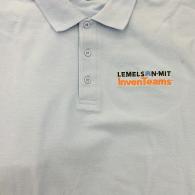January Update
Our official Lemelson-MIT InvenTeams shirts have finally come in! Picture will be attached to this blog post.
While our blog activity has been very low, we have many updates and exciting news about our project. The team has been grateful enough to have S&P Capital IQ as our corporate sponsors, who have been extremely helpful to reach out to for when we have any questions regarding our invention. Just recently on Friday the 16th, a few team members (Mitalee, Nikita, Sajan and Sneha) went down to one of S&P Capital IQ's locations in our own town to ask questions about our project and what devices we could use to further enhance the invention's capabilities.
After going through testing with a motion sensor and Pixy, we brought our data to S&P to figure out what would work best. The Pixy is a camera that can search for and detect objects based on its color pattern, while the motion sensors we tested are typical sensors that can be found on overhead garage door lights. We came to the conclusion that the Pixy would not be an optimal detection device in highly populated areas because it would be difficult for the device to detect any specific color pattern from over 40 feet away without interference of other cyclists/pedestrians/vehicles. Instead, we found out that a motion sensor can have its field of view narrowed down using a translucent-like film to block certain areas of the sensor, essentially creating an optimal field of view for the scanner to scan. The group as well as the corporate sponsors also came up with the idea of using multiple sensors that can scan different areas of the approaching cyclist's path that can help possibly determine how far away and how fast the cyclist is going.
After talking to one of our project advisors, who is a physics teacher and a cyclist himself, we determined that an average cyclist can be traveling at 10 mph at any point during its commute. Using data we found about how long it took to open a variety of car doors (the average time was 3 seconds), we did the math (listed below) and were able to determine that the sensor needs to detect objects that are at a maximum of 44 feet away, in order to give the driver enough time to assure that it is safe to open the door.
Next task:
Our next order of business is to begin testing with motion sensors, which we have ordered off Amazon, and begin collecting data to determine how much to narrow our field of view to and how we can implement multiple sensors that can coincide to create one optimal cyclist detector. We will have an update at the end of January to show where we are at!
Math equation: http://i.imgur.com/XCJIwQQ.png
Simple drawing from our meeting with S&P Capital IQ: http://i.imgur.com/NWjw8Va.jpg


